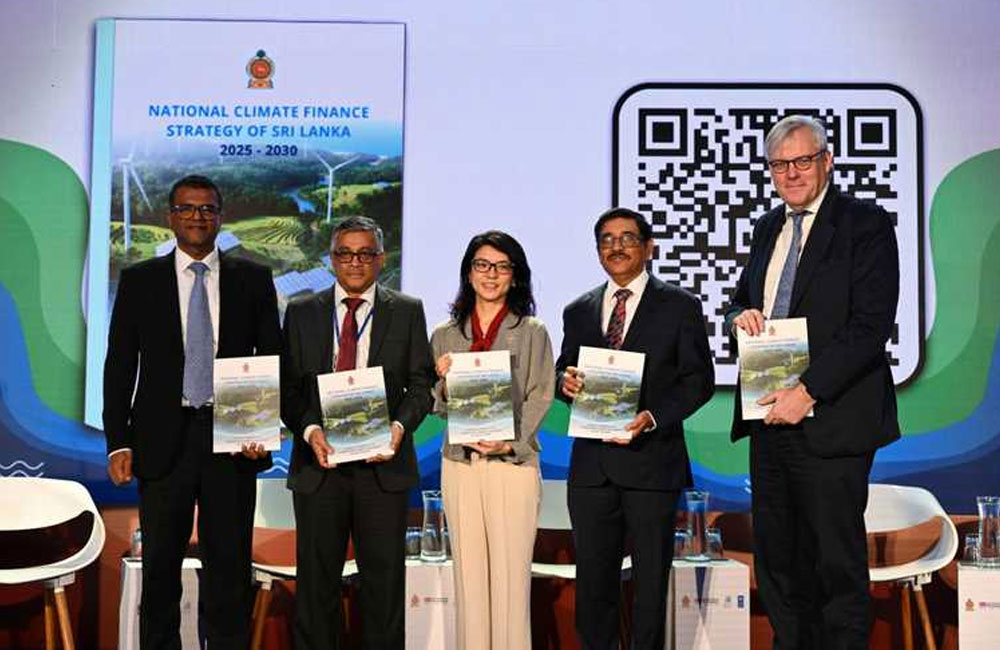Sri Lanka plans to mobilise nearly US$11.26 billion through Sovereign Green, Blue, and Sustainability-Linked Bonds by 2030, under the newly launched National Climate Finance Strategy (NCFS) 2025–2030, aimed at funding renewable energy, biodiversity conservation, and climate adaptation projects aligned with its 2050 carbon neutrality goal.
Developed with support from the UK Government and UNDP, the NCFS lays out a roadmap to make Sri Lanka a regional hub for sustainable finance. The Finance Ministry has already prepared a Sovereign Green and Blue Bond Framework and enlisted an international rating agency to ensure compliance with global green bond standards through a second-party review.
The strategy’s financial instruments Green Bonds, Blue Bonds, and Sustainability-Linked Bonds—each target specific sustainability outcomes. Green Bonds finance renewable energy, waste management, and afforestation. Blue Bonds focus on ocean conservation and sustainable fisheries. Sustainability-Linked Bonds, meanwhile, tie borrowing costs to measurable environmental performance, incentivising policy consistency and transparency.
Advantages of these instruments include access to lower-cost capital, improved sovereign credit reputation, and attraction of foreign climate-focused investors. They also signal policy continuity and accountability, which are crucial for investor confidence. The oversubscription of recent Green Bond issues indicates growing domestic investor interest, including from the private sector and retail participants.
However, there are risks and challenges. Experts note that managing transparency, reporting standards, and credible project pipelines is vital to avoid “greenwashing.” Ensuring funds are used exclusively for verified environmental outcomes will require robust monitoring and third-party audits. The country must also strengthen its institutional capacity to manage complex bond issuances and meet investor expectations in a volatile economic environment.
The NCFS’s phased implementation plan includes creating a sustainable bond framework, enhancing capacity building, developing climate-friendly projects, and establishing transparent reporting systems. It also proposes public-private partnerships, disaster risk insurance, and ESG-based swaps for sectors such as energy, water, and agriculture.

By combining these instruments with improved natural capital accounting and targeted policies—such as conservation fees and a green revolving fund the government aims to unlock new avenues for continuous climate investment.
If executed effectively, the NCFS could make Sri Lanka a regional leader in green finance, strengthen its sovereign credit profile, and attract sustainable funding critical for its economic recovery and environmental resilience.

Leave your comments
Login to post a comment
Post comment as a guest